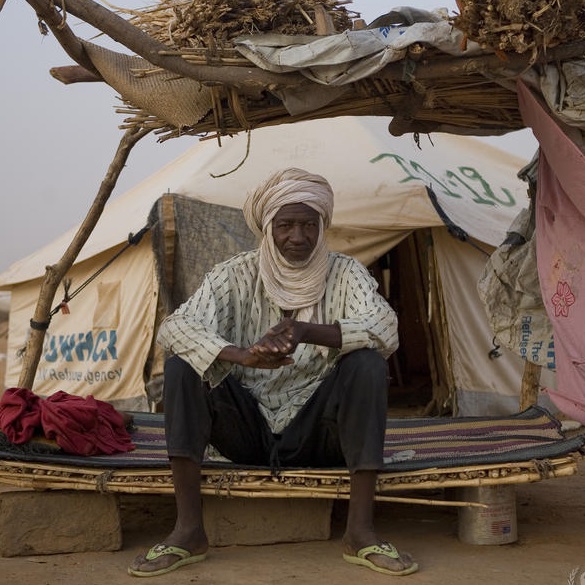Analysis and Refinement of Targeting Mechanisms for Food and Multipurpose Cash Assistance to Central African Republic Refugees - 2016
Cameroon, 2016
Get MicrodataIdentification
UNHCR-CMR-2016-AUB-2.1
Analysis and Refinement of Targeting Mechanisms for Food and Multipurpose Cash Assistance to Central African Republic Refugees - 2016
| Name | Country code |
|---|---|
| Cameroon | CMR |
Other Household Survey [hh/oth]
Due to persistent instability in the region, Cameroon hosts refugees and asylum seekers from neighboring countries, mainly from the Central African Republic and Nigeria. In 2015, nearly 259,000 Central African refugees arrived in Cameroon, of whom the vast majority settled in the Northern, Eastern and Adamaoua regions. Within these regions, the study identified 11 subsistence zones, of which the 5 zones with the highest refugee concentration were surveyed, in order to inform UNHCR's Livelihoods Strategy 2017-2020 targeting these refugees and to provide a baseline against which to measure the success of its implementation. The survey was conducted among 2,206 refugee households in November 2016. The household data is supplemented with UNHCRs progress data for the purpose of refining the targeting approach of both WFP and UNHCR.
Sample survey data [ssd]
Household and individual
Version
2.1: Edited, anonymous dataset for licenced distribution.
2020-01-11
Scope
The scope of the quantitative data of this socio-economic assessment includes:
- Identification of the household
- Household members (demographic characteristics, education, economic activity)
- Access to services
- Health
- Child education and health
- Food and other assistance
- Agricultural production
- Sources of income
- Asset ownership
- Dwelling/housing characteristics
- Food consumption groups
- Expenditure
- Credit/debt
- Coping strategies
- Social participation
- Intentions of return
| Topic |
|---|
| Livelihood & Social cohesion |
Coverage
Areas hosting Central African refugees in 5 subsistence zones under study within Cameroon's Adamanou, Eastern and Northern regions. This included 7 refugee camps (Gado-Badzere, Lolo, Bile, Timangolo, Borgop, Ngam and Ngarisingo) as well as various non-camp sites.
All Central African refugee households residing in the 5 subsistence zones under study within Cameroon's Adamanou, Eastern and Northern regions.
Producers and sponsors
| Name |
|---|
| UNHCR |
| Name |
|---|
| IFORD |
Sampling
The survey's objective was to deliver representative data on all refugees living in 5 subsistence zones under study within the Adamanou, Eastern and Northern regions of Cameroon. These subsistence zones were defined along characteristics of geography, production patterns, market access, etc. - a total of 11 such zones were identified within the three regions, and the 5 zones with the highest refugee concentration were retained for the survey. The total Central African refugee population in Cameroon at the time of the survey was estimated at around 52,000 households; the total in the three regions at around 46,800 households; the total in the five selected subsistence zones within the three regions at around 26,000 households.The survey was designed to be representative of the latter 26,000. The refugees within the five zones were located in 7 refugee camps and 11 non-camp sites.
For this survey a stratified, single-stage (i.e. non-clustered) sample design was applied. The camps and non-camp sites were considered sampling strata. Within each of these 18 strata, a systematic sample of households was drawn from UNHCR's registration list, this enabled the later addition of data from UNHCER registration database for the households included in the survey.
The total sample size was 2,206 refugee households.
NB: The original data collection also included a small number of households from the neighbouring host community; however, these observations were dropped from the public-release version of the dataset.
None.
Overall response rate was 92.3%
Weights are post calculated based on the information from the UNHCRs registration database.
Survey instrument
The SEA questionaires are provided in section "external ressources".
Data collection
| Start | End |
|---|---|
| 2016-11-19 | 2016-11-30 |
- Face-to-face [f2f]
Data was collected on paper through face-to-face interviews.
Data processing
The dataset presented here has undergone light checking, cleaning and restructuring (data may still contain errors) as well as anonymization (includes removal of direct identifiers and sensitive variables, and grouping values of select variables).
Data Access
| Is signing of a confidentiality declaration required? | Confidentiality declaration text |
|---|---|
| yes | No attempt will be made to identify respondents or microdata providers, and no use will be made of the identity of any person, facility or establishment discovered inadvertently. Any such discovery would immediately be reported to UNHCR, to allow evaluation of further use, apply further statistical disclosure control methods, impose further restrictions on access, or appropriately re-classify the data. No attempt will be made to create links between datasets provided by UNHCR, or between UNHCR data and other datasets that could identify individuals or organizations. |
UNHCR (2016). Socio-economic assessement of Central African refugees in Cameroon's Adamanou, Eastern and Northern regions 2016. UNHCR Microdata Library; https://microdata.unhcr.org
Disclaimer and copyrights
UNHCR does not warrant in any way the accuracy of the information and data contained in the datasets and shall not be held liable for any loss caused by reliance on the accuracy or reliability thereof.
Contacts
| Name | Affiliation | |
|---|---|---|
| Solutions | UNHCR | solutions@unhcr.org |
Metadata production
UNHCR-CMR-2016-AUB-2.1
| Name | Role |
|---|---|
| UNHCR | Collection and documentation of records |
2020-01-10
Metadata version
Version 1.2 (January 2020)
